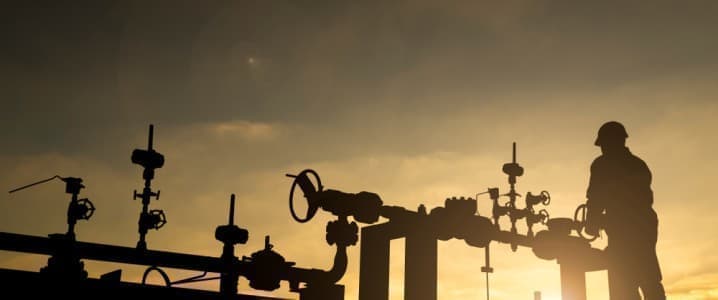Global gas demand is projected to rise in the next decade, thus influencing a 12.5% surge in production between 2023 and 2030. However, Rystad Energy forecasts that even in scenarios of 1.9 and 2.5 degrees Celsius warming, with rapid growth in renewable energy sources, the current set of existing gas fields will not meet global demand, requiring rapid growth in unconventional gas supply. Gas-rich geographies such as the Middle East, with basins such as Rub al Khali, will play an essential role in bridging that gap, providing an estimated 20 million tons per annum (tpa) of LNG by 2040.
The production of unconventional gas, such as shale, has experienced rapid growth in recent years due to technological advancements and reduced lead times. This rapid growth has driven the global share of unconventional gas supply in global gas production at a pace that has previously required significantly more time to achieve, escalating from 4% in 2000 to 12% in 2022 and 35% in 2023.
The influx of affordable gas from unconventional sources and ongoing supply from exporting countries like Russia has tempered exploration efforts for conventional gas. This is evident in that nearly 70% of discovered conventional volumes have yet to receive sanctions for development, showcasing the hurdles and reluctance to develop some of these finds.
Historically, Russia and the Middle East have dominated conventional gas production. This is not slowing down anytime soon, with Middle Eastern countries ramping up gas volumes as part of their new energy transition strategies.
Gas is increasingly considered a crucial stepping stone to a sustainable future. With reduced emissions and regional energy security goals aligned, gas is poised to play a pivotal role in the global energy transition. The Middle East is a key driver of this shift, slowly moving into developing and increasing gas volumes as part of their new energy transition strategies
Aatisha Mahajan, vice president of exploration, Rystad Energy

Learn more with Rystad Energy’s Upstream Solution.
Embrace the unconventional – Jafurah indicative of regional pivot
The share of unconventional gas in global production will increase to more than 30% by 2030. This expected increase in unconventional production is primarily due to a decline in exploration success over the past decade and the lack of developed conventional gas projects, pointing to a reduction in overall conventional gas supply.
The Gulf Cooperation Council (GCC) region has traditionally been an oil and gas production powerhouse. However, in recent years, there has been a decline in large conventional discoveries, spurring countries in the region to explore and develop more unconventional resources.
Saudi Arabia exemplifies this transition as the kingdom aims to eliminate oil from its power production and achieve an electricity generation split of 50% renewables and 50% natural gas by 2030. This shift toward a more diversified energy landscape is supported by the growing demand for gas within the country, forecast to reach 125 billion cubic meters (Bcm) annually by the decade's end.
To match burgeoning demand, Saudi Arabia will require new production from non-associated gas fields as well as unconventional gas plays, such as the Jafurah field - the most extensive liquids-rich shale gas play in the Middle East, with estimated lifetime investments exceeding $100 billion. Saudi Aramco, the driving force behind the Jafurah project, plans to achieve peak shale gas production of 2 billion cubic feet per day (Bcfd) by 2030.
Rystad Energy estimates that this target of peak production will be met in the second half of the 2030s. By then, the project could account for nearly 15% of Saudi Arabia’s total gas production, providing a significant boost to the nation’s overall gas supply.

Call for capital – Development needed for long-term supplies
Global gas demand will rise toward the middle of the 2030s. However, currently producing and underdeveloped gas fields are expected to peak production in the next couple of years before starting to decline. Even considering all the fields yet to be sanctioned and currently in the discovery lifecycle category, peak production is still far from realization under ideal scenarios.
Our analysis of global warming scenarios suggests more gas exploration and production is required to meet 1.9 or 2.5 degrees of warming. In every scenario except the 1.6 degrees, additional gas resources are needed to meet demand. Therefore, gas exploration and additional capital investment within prominent gas basins or gas-rich countries are necessary.
Unconventional gas will continue to play a prominent role in the world’s supply mix, estimated to increase to approximately a third by 2030. This expected increase in unconventional production is primarily due to a decline in exploration success over the past decade and the lack of developed conventional gas projects, leading to a drop in the overall conventional gas supply.
Only 32% of conventional gas volumes discovered since 2010 are producing, with more than 50% yet to be approved for development. As a result, countries that rely on conventional sources of gas will have to turn towards unconventional volumes to meet net-zero targets and satisfy global demand if they do not increase their investment in production.

More Top Reads From Oilprice.com:
- Investors Prioritize Profits Over Green Credentials
- Battery Lifespan Could Double With New Breakthrough
- U.S. Delays Aid To Ukraine Amid Domestic Political Disputes


















